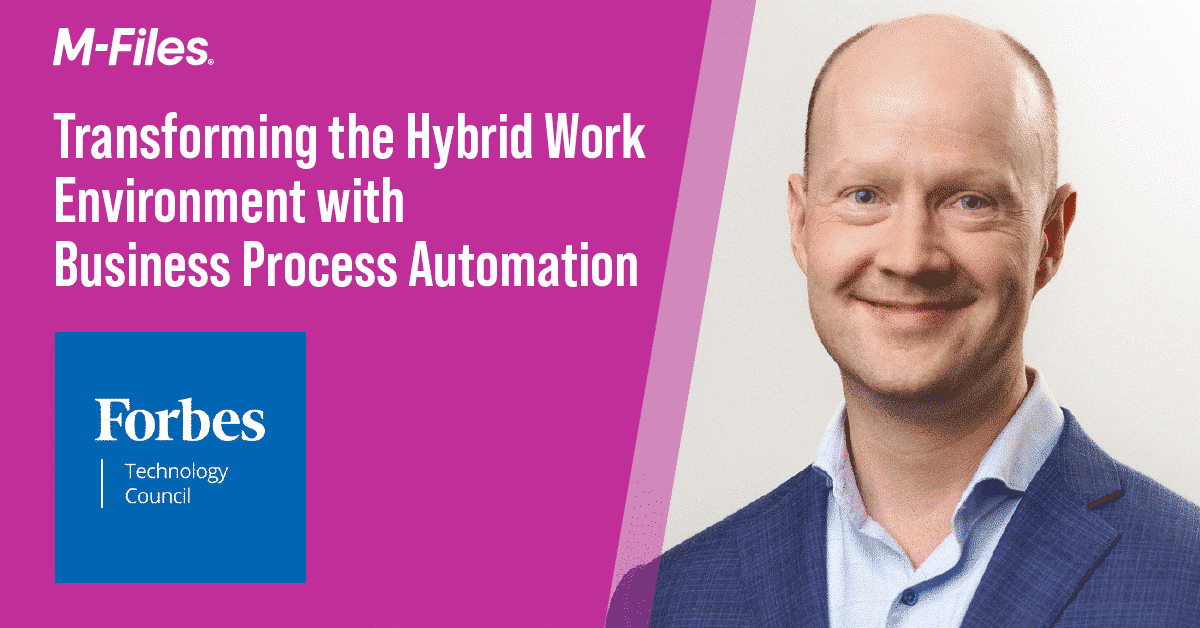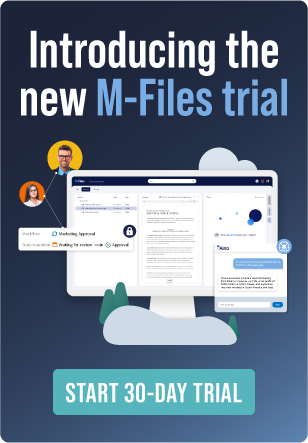Transforming the Hybrid Work Environment with Business Process Automation

By Antti Nivala on July 8, 2022
For decades, businesses were largely office-first, leaving little room for employee choice in how or when they work. As employers adjust to the post-pandemic future of the office, today’s fast-paced workflows and client demands have changed how knowledge workers access and use data. Properly and efficiently accessing data and information for employees to make informed decisions remains a significant barrier.
Executives are now tasked with maintaining productivity in a hybrid setting while preserving data quality. Leveraging digital innovation and workflow technologies such as business process automation can create a seamless digital experience that supports and empowers employees within a hybrid environment.
The High Cost of Bad Data Quality and Workplace Errors
Businesses produce and collect incredible amounts of data every day, especially as life moves further online with the rise in hybrid work. Inside that data lies the crucial information needed to produce better products and services, build stronger and more enduring customer relationships, and increase operational efficiency. The issue? Finding quality data can often seem like an impossible task.
Errors in the workplace can result from low-quality data and the inability to distinguish it from high-quality data. In turn, these errors can have a tremendous impact on an organization’s bottom line. According to Gartner, poor data quality can cost a business on average anywhere between $9.7 million and $14.2 million yearly, with 95% of organizations saying that managing unstructured data is a significant problem.
So why can bad data quality and workplace errors be so catastrophic for a business? Take a client invoice, for example – after work has been completed, the client is supposed to receive an invoice and pay the money owed. But what if an employee failed to send the invoice out or accidentally entered the wrong address because they were too busy combing through data or doing time-consuming, manual tasks? The company might not discover this error for several weeks, losing out on the money it is rightfully owed.
This might seem trivial, but if these small workplace errors continue to persist, they can lead to dire consequences for the business. Therefore, businesses are now leaning on workflow technologies to reduce workplace errors in the hybrid work era.
The Benefits of Business Process Automation
Simple workplace errors can quickly add up, so enterprises are looking at business process automation solutions to help automate processes that will reduce time-consuming, menial tasks like sending out invoices. According to McKinsey, 60% of occupations could save 30% of their time with automation. Business process automation helps to reduce the possibility of human error by taking a repeatable process and carrying it out accurately, consistently, and reliably. It also represents a system that can perform tasks around the clock, seven days a week, 365 days a year – an attractive prospect for enterprises.
The benefits of business process automation spread to every facet of the organization, such as increasing productivity and compliance by creating more cost-efficient, error-proof, and consistent business processes and allowing employees to focus on matters that truly need their attention. Enterprises that use business process automation often get a powerful return on investment, especially when it comes to document management. Many workplace errors occur due to documents being stored in various places across the hybrid enterprise with no easy way to find or retrieve the latest version, meaning that knowledge workers may be working on and making decisions from the wrong version of a document. With a document management tool with built-in business process automation capabilities, knowledge workers have a single point of access to information and engagements in an organized and secure manner, wherever they are working.
Workplace errors aren’t 100% avoidable in the hybrid work era but integrating workflow technologies can help to mitigate the risk. By automating the flow of information to eliminate the errors and duplications of document-driven processes, enterprises can streamline operations by making operational tasks and work procedures repeatable, empowering knowledge workers to focus on the tasks that create long-lasting relationships with clients and customers.




